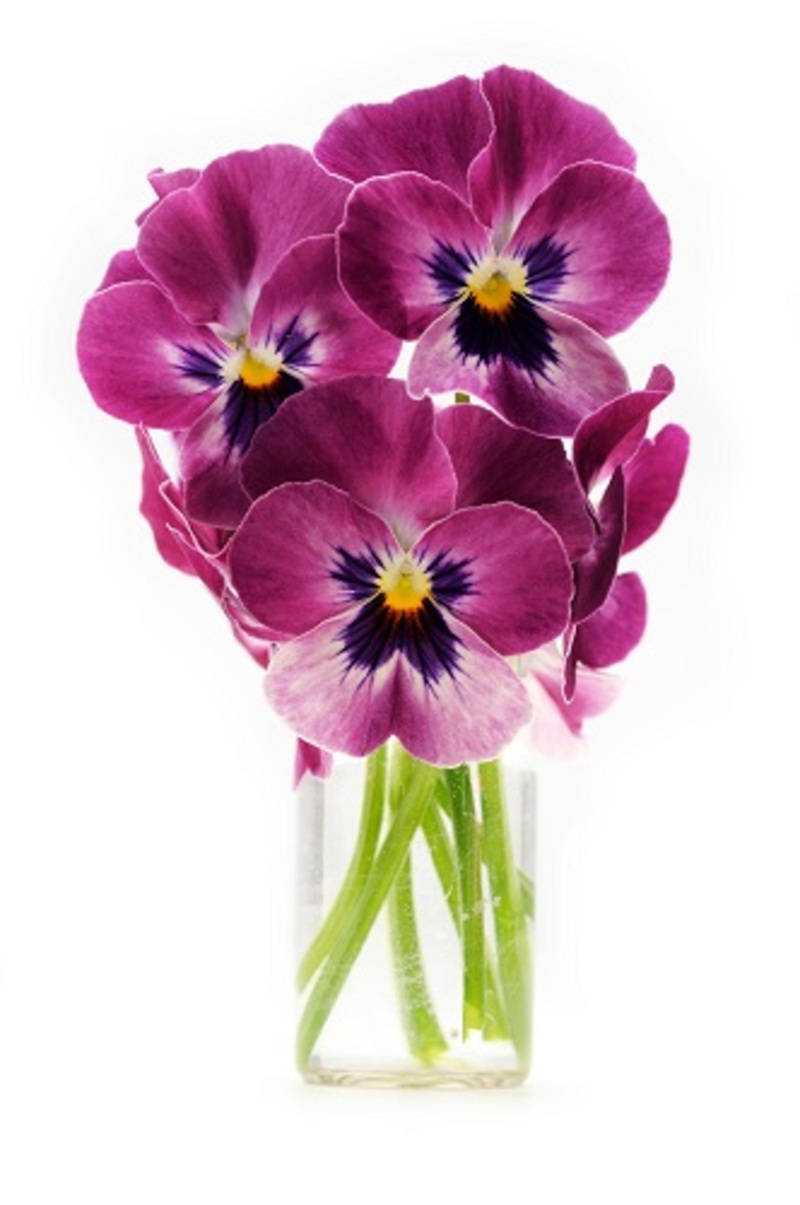Secrets to Enjoying Poinsettias Beyond the Holidays
Posted on 03/09/2025
Secrets to Enjoying Poinsettias Beyond the Holidays
Poinsettias are often associated with the glitz and glamour of the holiday season. Those vibrant red leaves, technically called bracts, adorn countless homes, brightening winter with festive cheer. But did you know that the enchanting poinsettia can be much more than just a Christmas centerpiece? With a little knowledge and care, you can extend the beauty of your poinsettias well past the holidays. In this article, we reveal the secrets to enjoying poinsettias year-round, delving into care, creative uses, and more.
Understanding Poinsettias: More Than Just a Holiday Plant
Native to Mexico, poinsettias known botanically as Euphorbia pulcherrima have a rich cultural history and stunning variety. While most recognize them for their classic crimson hue, poinsettias come in a palette of colors: soft pink, creamy white, marbled, and golden shades. Their appeal is undeniable, but their popularity as a "disposable" plant does them a disservice.
- Versatile Aesthetics: Poinsettias can complement any decor, not just holiday themes.
- Longer Lifespan: With proper care, a poinsettia can thrive for many months, even years.
- Air Purifiers: Like many houseplants, poinsettias contribute to home air quality.
The secret lies in treating your poinsettia as a cherished houseplant rather than a temporary decoration.

Post-Holiday Care: Transforming Your Poinsettia's Fate
Once the holidays end, it's tempting to toss your poinsettia as you pack away the tinsel and ornaments. Don't! With a few simple strategies, your poinsettia can become a year-round companion. Here's how:
Maintain Appropriate Light Levels
Poinsettias prefer bright, indirect sunlight. Place your plant near a sunny window, but avoid direct rays, as they may scorch the bracts and leaves. Insufficient light can cause leaf drop and faded colors.
Ideal Temperature and Humidity
- Temperature: Poinsettias are sensitive to cold. Keep them in a room between 65-75?F (18-24?C).
- Humidity: These plants prefer moderate humidity. If your home is dry in winter, increase humidity with a tray of water and pebbles or a humidifier nearby.
Watering Wisely
The biggest mistake? Overwatering or underwatering. Let the top inch of soil dry out before watering. Drain excess water thoroughly--the roots dislike "wet feet." Wilting, yellow leaves, or root rot often results from water-related stress.
Fertilizing for Longevity
Dilute a balanced, water-soluble fertilizer to half strength and feed your poinsettia every 3-4 weeks during the spring and summer. Hold off on fertilizing during the bloom and dormant periods.
Pruning and Reblooming: The True Secret to Year-Round Poinsettia Beauty
Spring Pruning Tips
- Cut the stems back to about 6 inches in late winter or early spring once fading bracts drop.
- This stimulates vigorous, bushy growth and prevents legginess.
- Remove dead or damaged stems to encourage healthy foliage.
Repotting for Growth
Spring is also the best time to repot your poinsettia, especially if it has outgrown its original container. Use a well-draining potting mix and a slightly larger pot. Fresh soil boosts nutrients and supports root health.
Encouraging Rebloom for Next Holiday
Poinsettias naturally bloom in response to shorter daylight hours--what horticulturists call a photoperiod plant. If you want your poinsettia to rebloom and display colorful bracts for next Christmas, follow these steps:
- Starting in late September or early October, provide 14 hours of complete darkness each night, using a box or closet.
- During the day, place the plant in bright, indirect light.
- Continue this night/day cycle for 8-10 weeks.
- Maintain regular watering and fertilizing.
Within two months, color should return to the bracts, and your plant will be ready to brighten your home once more.
Creative Ways to Enjoy Poinsettias All Year Long
Beyond their classic use as a holiday centerpiece, poinsettias can enliven your home with color and texture throughout the year. Here are some inspiring ideas for poinsettia enjoyment beyond the holidays:
Poinsettia Outdoors: Patio & Garden Planting
- Climate permitting, move your poinsettia outdoors after the last frost in late spring.
- Gradually acclimate the plant to outdoor light.
- Use in mixed planters with other annuals for a splash of color.
- In USDA Zones 9-11 it's possible to plant poinsettias directly in the ground as a small shrub.
Note: Always bring poinsettias inside before temperatures drop below 50?F (10?C).
Table Displays for Every Season
With clever pot choices or creative groupings, you can use poinsettias as table displays year-round:
- Pair with spring bulbs like daffodils for a cheerful spring centerpiece.
- Use white or pale pink poinsettias with pastel accessories for an elegant summer look.
- Cluster smaller poinsettias with gourds and fall leaves for autumnal decor.
Living Gift Ideas
A healthy poinsettia makes a thoughtful gift at any time of year. Present one in an attractive pot for birthdays, anniversaries, or as a cheerful "get well soon" gesture.
Creative Container Choices
Swap out traditional foil for woven baskets, ceramic planters, or upcycled containers. Enhance with moss, bark chips, or decorative stones for an artistic touch. Poinsettia arrangements can fit rustic, modern, or boho styled homes--whatever suits your personality!
Common Poinsettia Care Concerns (and How to Solve Them)
Why Are My Poinsettia Leaves Dropping?
Leaf drop is often a sign of stress--typically from:
- Dramatic temperature fluctuations (drafts or heaters).
- Sudden changes in lighting conditions.
- Over or under-watering.
Maintain a consistent environment for the healthiest results.
My Poinsettia Isn't Turning Red Anymore. What Do I Do?
This is normal outside the festive season. Bracts require that special dark-light cycle in fall, as detailed above, to regain their vivid shades. Keep the plant healthy the rest of the year, and the glorious color will return with the right treatment.
Are Poinsettias Poisonous?
This enduring myth is largely exaggerated. While poinsettia sap can cause mouth and stomach irritation if ingested and mild skin irritation in some people, it is not considered deadly to humans or pets. However, always keep out of reach of curious children and animals, and wash hands after handling.
Fun Facts and Poinsettia Trivia
- An International Symbol: December 12 is National Poinsettia Day in honor of Joel Poinsett, the U.S. ambassador who introduced the plant to America.
- Poinsettia Varieties: There are over 100 different types, featuring diverse shapes and colors!
- Long-Lived Plants: With attentive care, some have kept poinsettias thriving for over a decade.
Poinsettia Care Checklist for All Seasons
- Winter: Display in bright rooms, away from heating vents. Water sparingly.
- Spring: Prune back; repot if needed. Resume light fertilizing.
- Summer: Move outdoors if possible, fertilize regularly. Watch for pests like whiteflies and treat as needed.
- Fall: Begin "dark period" for forcing bract coloration by October.
Advanced Tips: Propagating Your Own Poinsettias
If you love a challenge, try propagating new poinsettia plants from cuttings:
- In late spring or early summer, cut 3-4 inch sections from the tips of robust, healthy poinsettia stems.
- Dip cut ends in rooting hormone and insert into moist, well-draining soil or potting mix.
- Enclose the cutting with a plastic bag or use a mini-greenhouse to maintain high humidity.
- Keep in bright, indirect light--roots should develop in 3-4 weeks.
This is a rewarding project for gardening enthusiasts, letting you expand your collection or share plants with friends and family.
Poinsettias: Seasonal Stars Turn Year-Round Marvels
Ultimately, the secret to enjoying poinsettias beyond the holiday season is respect--treating them as the living, dynamic plants they are. With some attentive care, poinsettias can surprise and delight you all year long. Whether as a lush green houseplant in summer, an outdoor accent in warm months, or a festive showpiece come winter, poinsettias are more versatile than their seasonal reputation suggests.
Embrace these secrets to enjoying your poinsettia beyond the holidays, and you'll discover just how joyful this classic plant can be every month of the year.

Frequently Asked Questions: Enjoying Poinsettia Plants Beyond Christmas
- Can I keep my poinsettia all year long?
Yes! With proper care and a little extra effort, poinsettias can thrive for years, reblooming each winter. - What should I do with my poinsettia after Christmas?
Prune, repot if needed, keep in bright light, and resume regular watering and fertilizing starting in spring. - Will my poinsettia change color again?
Yes, if you provide the required darkness (14 hours nightly) in fall for 8-10 weeks. - Can I plant poinsettias outdoors?
In warm climates (USDA zone 9+), yes. Elsewhere, use as a summer patio or garden accent and bring indoors before frost.
Conclusion: Unlock a Whole New World of Poinsettia Enjoyment
Poinsettias don't have to disappear with the decorations. With a dash of horticultural know-how and a willingness to see beyond tradition, you can enjoy poinsettias beyond the holidays and keep your home glowing with color and life all year round. Take up the challenge--and let the legendary poinsettia become a beloved, enduring part of your indoor (and outdoor!) garden landscape.







